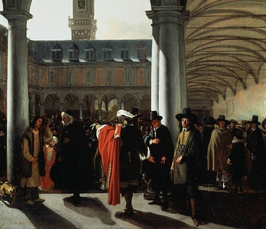Jour Fixe: Security Interests and Consistency in Commercial Law: the Example of Roman-Dutch Scholarship (17th c.)
Jour Fixe
- Date: Sep 10, 2018
- Time: 12:00 PM - 01:00 PM (Local Time Germany)
- Speaker: Dave De ruysscher, Tilburg University
- Opponent: Christiane Birr (MPIeR)
- Location: MPIeR
- Room: Lecture hall of the MPI

Over the course of the sixteenth century, the municipal and princely rules concerning security interests and insolvency in the County of Holland underwent important changes. But, however, only from around the middle of the seventeenth century onwards, a coherent framework of applicable rules became established. This was based on consensus among legal scholars. Legal authors came to assemble a sound set of rules, drawing from municipal bylaws and practices, from regional and princely legislation, as well as from doctrinal sources. Yet, however, this process was directive, following on municipal practices, in particular those found in cities that had a considerable mercantile scene, such as Leiden and Amsterdam. As a result of all this, in the middle of the seventeenth century a sophisticated regional law - of doctrinal flavor - took precedence over municipal practices. The Dutch example shows that legal issues regarding mercantile contracts and business, and even fundamental topics such as the enforcement and rank of security interests, started to gain legal form in municipal practice, but for their success and application ultimately hinged on scholarly work and a generalized acceptance of some solutions over others. This is the hypothesis that is tested in the course of the ERC-funded project "Coherence in law through legal scholarship". Consistent commercial law in the Early Modern era was a scholarly product: legal authors processed the raw materials of customs and practices (mercantile, forensic), but consistency was the finished product of their activities.
Image: © Willem van der Vorm Fundatie, Museum Boijmans van Beuningen; For information contact Koninklijke Bibliotheek